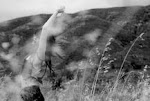
Photo: Ricardo Darín for Etiqueta Negra
One of the reasons why I like Psychology is that after years of studying it and practicing, you develop this ability to stop, contemplate and start again; to alter reality in a way that is suitable to yourself. I realize not everyone can acquire these skills nor is courageous enough to face his or her own limitations, but what happens when one accepts reality as it comes, without questioning it?
Let's take the concept of manhood, for example, and examine it. Although roles have changed somewhat in Argentina, in the popular imaginary men are taught to act tough, to be like "machos".
Traditionally, boys are educated by their mothers. Although in modern times, fathers are more active when it comes to child care, most fathers continue to be busy working and trying to be successful while most mothers stay home. This shortage of contact between sons and fathers creates an emotional gap between them in which there is perhaps not enough room for bonding, for closeness. This is why, it is in childhood, that boys often develop difficulties in learning what relating to other men is like.
They turn to their mothers with whom they talk, share their problems, their successes and failures, their everyday life. Boys see their father's through their mother's eyes. Boys are taught to "be strong" and to "put up" with things. What later happens when these boys become men is that they want to overcome the pain this has caused them without really dealing with it.
Facing that pain means accepting and talking about their father's failures and also dealing with change.
We like the work of Guillermo Vilaseca, who has thought about some of these issues deeply and has developed a program for men. They meet to think about themselves, their masculine condition and their relationship with the world, their fathers, their sons, women and work.
Men are used to having power, being tough, feeling important, proud and sure of themselves. But things are changing and the world is moving to a more feminine, communicative, empathetic, intuitive style.
Some men are receptive to this change, they understand that it’s not always about power, strength, dominance, etc. Mr. Vilaseca's work, along with various studies in Psychology show that when distances in bonds are shorter, individuals are likely to better off in their relationships.
Post by: Valeria Mendez Cañas
Editor: Mich Cameron







































